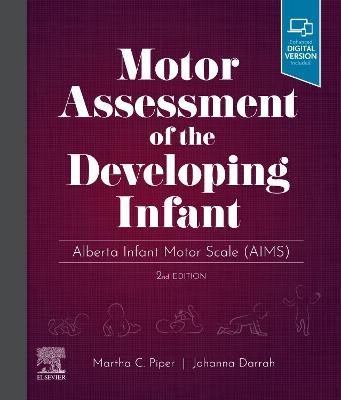(To see other currencies, click on price)
MORE ABOUT THIS BOOK
Main description:
Motor Assessment of the Developing Infant, 2nd Edition presents theories of infant motor development and discusses the unique challenges involved in assessing the motor skills of developing infants as compared to that of adults. It provides step-by-step instructions for using the Alberta Infant Motor Scale (AIMS) - a scale that measures infant gross motor skills. It also features a review of two current theories of motor development, line drawings and photographs of 58 gross motor skills, and a percentile graph to plot an infant's score and derive an estimate of his or her percentile ranking. Clinicians, researchers, and parents/caregivers have all reported satisfaction with both the ease of an AIMS assessment and the strong psychometric properties of the scale. Thus, the descriptors of the 58 motor items and the administration and scoring guidelines have stood the test of time and remain unchanged in this second edition.
If you have a general Permissions query or require guidance on how to request permission, please visit Elsevier's Permissions FAQ page (https://www.elsevier.com/about/policies/copyright/permissions) where you will find further information, or alternatively you may submit a question via (https://service.elsevier.com/app/contact/supporthub/permissions-helpdesk/).
For Licensing opportunities, please contact H.Licensing@elsevier.com.
Comprehensive coverage of how to use the Alberta Infant Motor Scale, a standardized measurement scale used to assess the gross motor abilities of infants.
Line drawings and photographs of 58 gross motor skills.
Five copies of the AIMS scoresheet are included with the print edition.
The Alberta Infant Motor Scale is trusted by clinicians and researchers across the globe.
NEW! Enhanced eBook version, included with print purchase, contains an electronic view of the scoresheet for ease of reference and allows you to access all of the text, figures, and references from the book on a variety of devices.
NEW! Clinical examples in the Clinical Uses of the Alberta Infant Motor Scale chapter offer brief case studies showing the different clinical uses of the AIMS.
NEW! Scoring section in the Administration Guidelines chapter includes examples of common scoring errors.
NEW! Additional scoring "hints" are provided for items that have been identified as problematic during therapist training sessions.
UPDATED! Theories of Motor Development chapter presents the change from the neuromaturational theory to those originating from dynamic systems theory and motor control theories.
UPDATED! Motor Assessment of the Developing Infant chapter includes a discussion of the unique challenges of assessing infant motor abilities and the important psychometric properties to consider when choosing an infant assessment tool.
UPDATED! Clinical Uses of the Alberta Infant Motor Scale chapter includes recent literature on clinical uses and advises on when not to use the AIMS as an assessment measure.
UPDATED! Norm-Referencing of the Alberta Infant Motor Scale chapter reflects the most up-to-date normative data and validity research and discusses research on the instability of infant motor scores over time in typically developing infants using the AIMS.
Contents:
1 Theories of Motor Development
2 Motor Assessment of the Developing Infant
3 Alberta Infant Motor Scale: Construction of a Motor Assessment Tool for the Developing Infant
4 Administration Guidelines
5 Prone Subscale
6 Supine Subscale
7 Sit Subscale
8 Stand Subscale
9 Clinical Uses of the Alberta Infant Motor Scale
10 Psychometric Properties of the AIMS
11 Norm-Referencing of the Alberta Infant Motor Scale
Appendix I Percentile Ranks - AIMS Score
Appendix II Percentile Ranks by Age Grouping
Appendix III Normative Data
Appendix IV Percentile Ranks
Index
PRODUCT DETAILS
Publisher: Elsevier (Elsevier - Health Sciences Division)
Publication date: January, 2022
Pages: 288
Weight: 570g
Availability: Available
Subcategories: Physiotherapy
Publisher recommends


